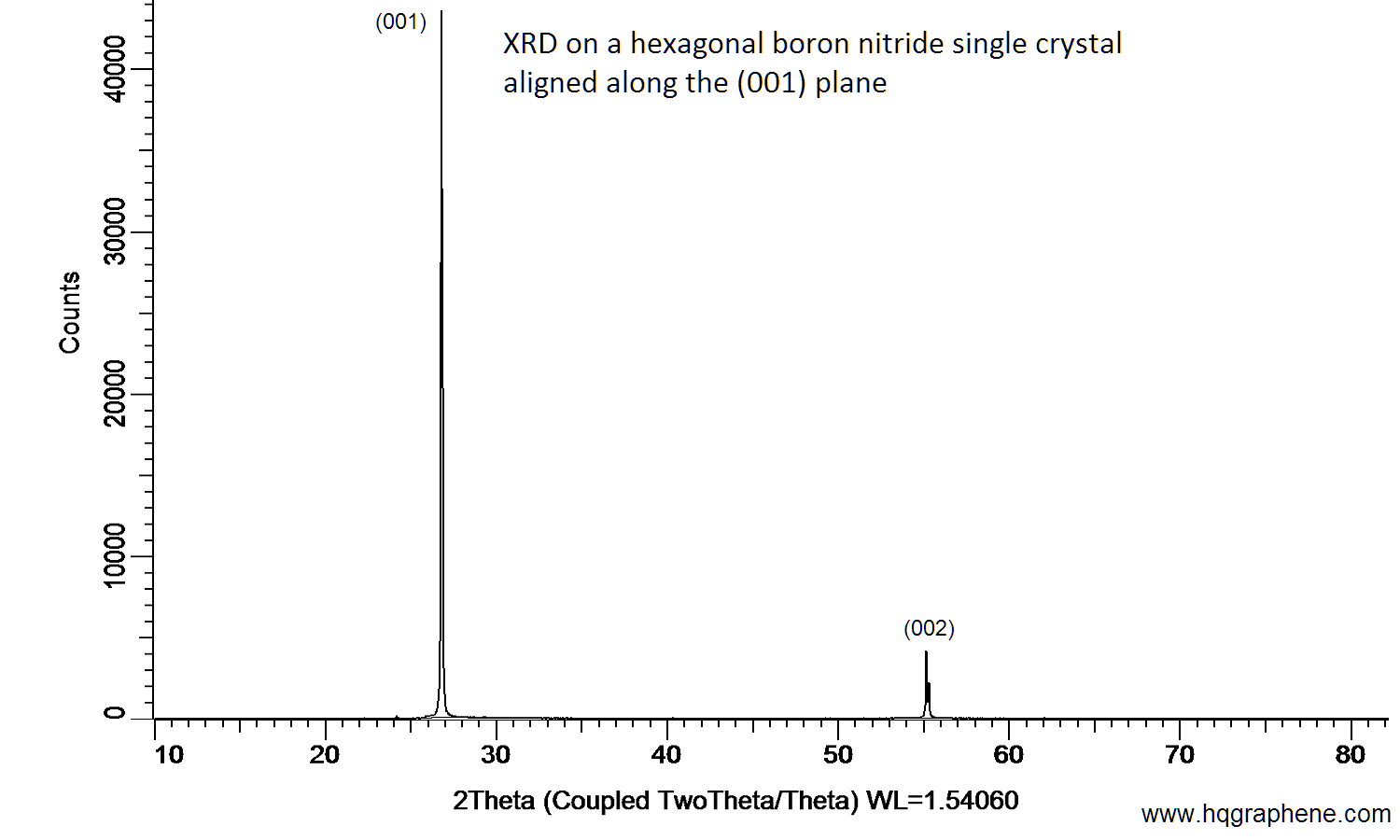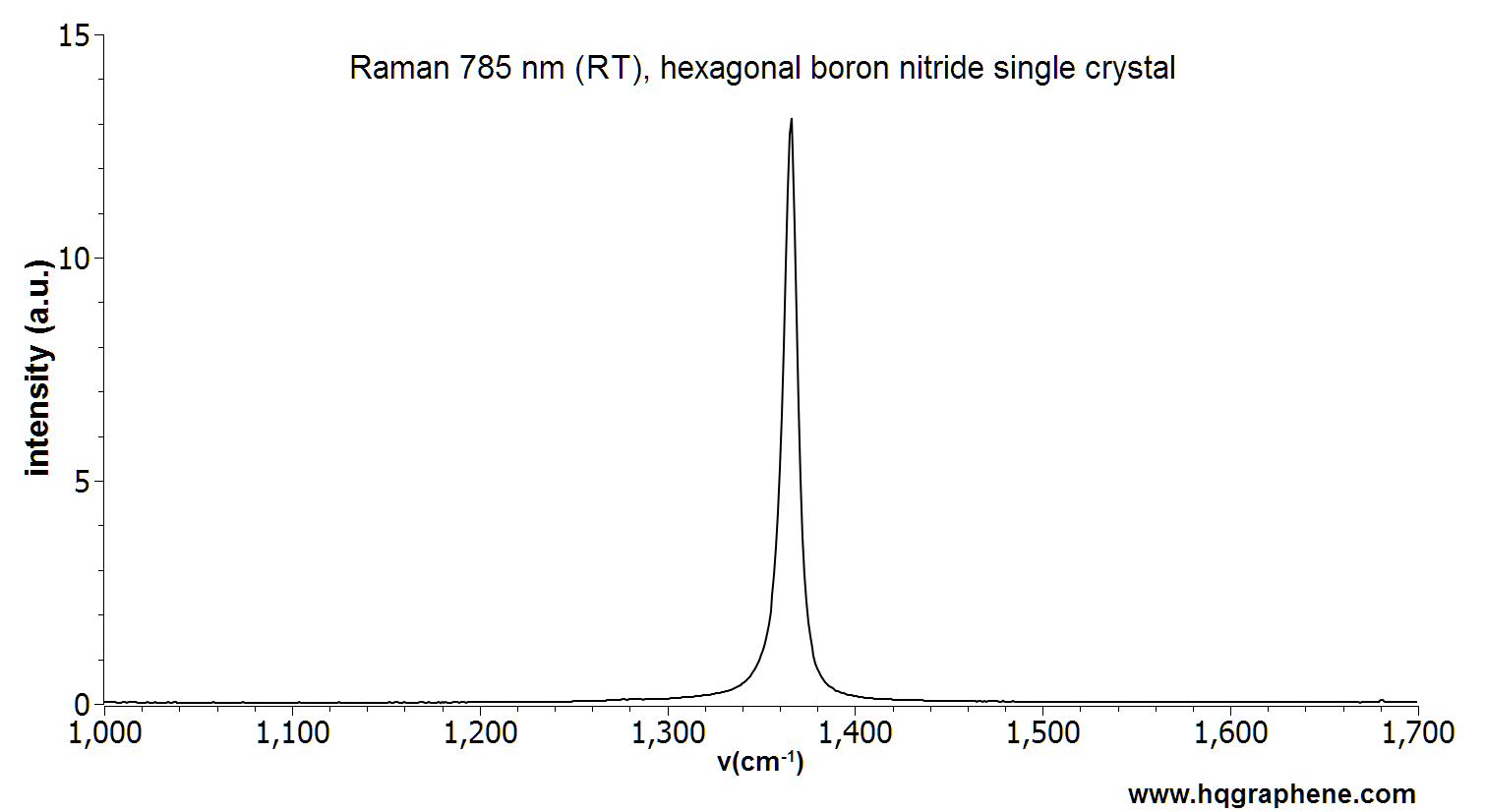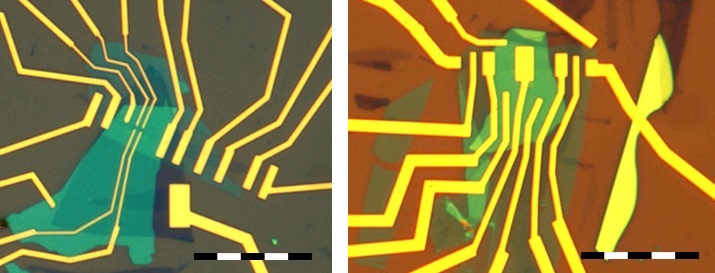Hexagonal Boron Nitride (h-BN, BN2A1)
Hexagonal boron nitride is an insulator with a band gap of ~6 eV and has been used extensively as an insulator for the production of ultrahigh mobility 2D heterostructures composed of various types of 2D semiconductors (e.g. WSe2, MoSe2, etc).
The layers are stacked together via van der Waals interactions and can be exfoliated into thin 2D layers, down to monolayer h-BN.
To buy hexagonal boron nitride crystals please click here.
The h-BN crystals from HQ Graphene have a typical lateral size of ~0.1 cm and are transparent. The monocrystalline h-BN is an excellent insulator which is represented by its very large breakdown voltage (>0.4 V/nm). Large area size h-BN single crystals can be can be exfoliated onto a substrate (eg. SiO2, quartz, polymer, etc). Sizes range up to ~100 μm for crystals with a thickness of a few tens on nm thick.
A selection of peer review publications on the hexagonal Boron Nitride we sell can be found below.
| Crystal size | ~1 mm |
| Electrical properties | Insulator |
| Crystal structure | Hexagonal |
| Unit cell parameters | a = b = 0.2502 nm, c = 0.6617 nm, α = β = 90°, γ = 120° |
| Monolayer properties | |
| Type | Synthetic |
| Purity | Grade A |
| Characterized by | XRD, Raman, EDX |
| More information? | Please contact us by email or phone |
The single crystal h-BN is characterized using:
XRD: single crystal and powder X-ray diffraction (D8 Venture Bruker and D8 Advance Bruker)EDX: Energy-dispersive X-ray spectroscopy for stoichiometric analysis
Raman: 785nm Raman system
Raman, XRD and EDX on h-BN:
Click on an image to zoom



HQ Graphene Wiki on:
h-BN (Hexagonal Boron Nitride)
1. Lee, C.J., et al. "Ternary Devices Based on Partially Aligned MoS2/h‐BN/Graphene Heterostructures." Advanced Materials Interfaces 8.21 (2021): 2101109.
2. in, Jiyou, et al. "Optoelectronic Nonvolatile Memories Using Graphene/Hexagonal Boron Nitride/Rhenium Disulfide Heterostructure." ACS Applied Electronic Materials 4.6 (2022): 2964-2969.
3. Gale, A., et al. "Deterministic fabrication of blue quantum emitters in hexagonal boron nitride." arXiv preprint arXiv:2111.13441 (2021).
